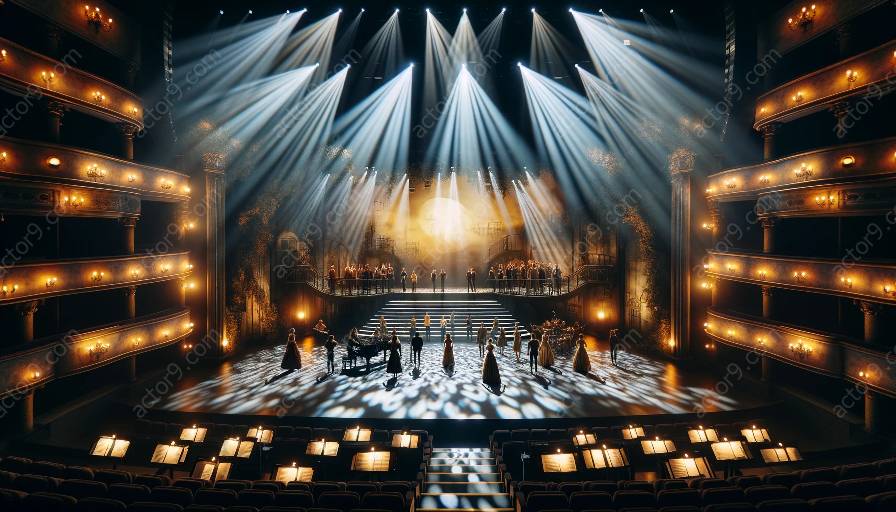Adaptation to different musical theatre genres is a fascinating and complex process that involves understanding the unique characteristics of each genre and effectively translating them onto the stage. Whether it's a grand Broadway musical, an intimate chamber opera, or a vibrant rock opera, the adaptability of performers, designers, and producers is put to the test.
Understanding Musical Theatre Genres
Before delving into the adaptation process, it's imperative to grasp the distinct characteristics of various musical theatre genres. Broadway musicals, for example, are known for their large-scale production, elaborate sets, and intricate choreography. In contrast, chamber operas emphasize intimate storytelling with minimalistic staging and a focus on vocal performances. Rock operas bring an entirely different energy with their fusion of rock music and theatrical storytelling.
Adapting Performance and Direction
Performers and directors play a pivotal role in adapting to different musical theatre genres. They must be versatile enough to embody the distinct styles and narratives of each genre. A performer who excels in a classic Broadway musical may need to adapt their vocal techniques and stage presence to suit the raw energy of a rock opera. Similarly, directors must carefully orchestrate the staging, blocking, and overall vision to authentically capture the essence of each genre.
Embracing Diversity in Lighting Design
Lighting design in musical theatre is an art that complements the adaptation to different genres. Just as performers and directors adapt to the unique characteristics of each genre, lighting designers must adjust their approach to suit the mood, atmosphere, and visual aesthetics of the production. From the bold, dramatic lighting of a rock opera to the subtle, evocative lighting of a chamber opera, the adaptability of lighting design enhances the immersive experience for the audience.
Seamless Integration of Genres
One of the most intriguing aspects of adapting to different musical theatre genres is the potential for cross-pollination and hybrid productions. This allows for the seamless integration of elements from various genres, creating innovative and compelling performances. For example, a production may blend the grandeur of a Broadway musical with the raw energy of a rock opera, resulting in a dynamic and multifaceted experience for the audience.
Challenges and Rewards
Adapting to different musical theatre genres presents both challenges and rewards. It requires a deep understanding of each genre's conventions, as well as the creativity to push boundaries and explore new possibilities. The reward lies in the exhilarating journey of bringing diverse musical styles to life on the stage and captivating audiences with unique and unforgettable experiences.
Conclusion
Adaptation to different musical theatre genres is a multifaceted and dynamic process that demands creativity, versatility, and a deep appreciation for the rich tapestry of musical storytelling. Through seamless integration, artistic expression, and the collaborative efforts of performers, directors, designers, and producers, the diverse world of musical theatre genres continues to thrive and inspire.




































